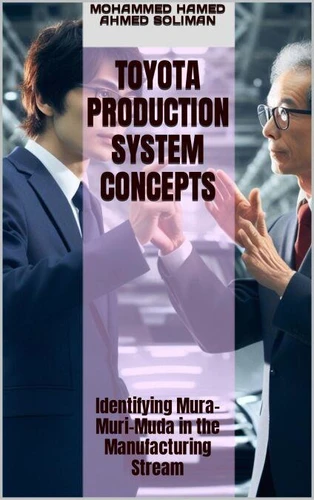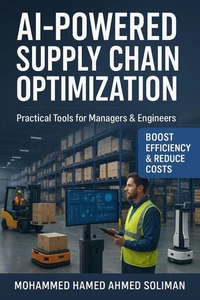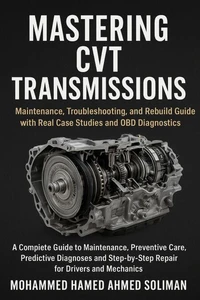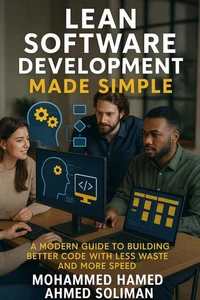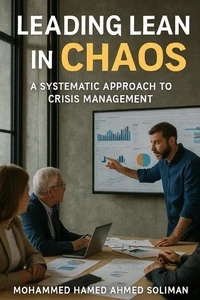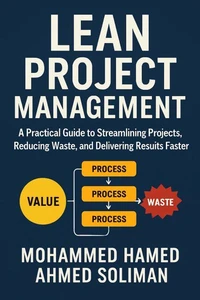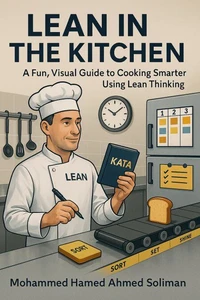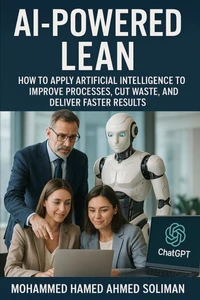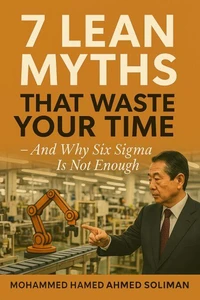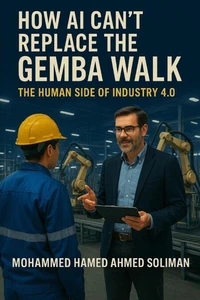Identifying Mura - Muri - Muda in the Manufacturing Stream. Toyota Production System Concepts, #14
Par :Formats :
Disponible dans votre compte client Decitre ou Furet du Nord dès validation de votre commande. Le format ePub protégé est :
- Compatible avec une lecture sur My Vivlio (smartphone, tablette, ordinateur)
- Compatible avec une lecture sur liseuses Vivlio
- Pour les liseuses autres que Vivlio, vous devez utiliser le logiciel Adobe Digital Edition. Non compatible avec la lecture sur les liseuses Kindle, Remarkable et Sony
- Non compatible avec un achat hors France métropolitaine
 , qui est-ce ?
, qui est-ce ?Notre partenaire de plateforme de lecture numérique où vous retrouverez l'ensemble de vos ebooks gratuitement
Pour en savoir plus sur nos ebooks, consultez notre aide en ligne ici
- FormatePub
- ISBN8215193327
- EAN9798215193327
- Date de parution28/10/2023
- Protection num.Adobe DRM
- Infos supplémentairesepub
- ÉditeurWMG Publishing
Résumé
During economic downturns, many businesses try to cut costs through abstinence policies, such as layoffs, pay reductions, or temporary cutbacks. While these measures may provide short-term relief, they rarely solve the underlying problem. Without creating a culture of continuous improvement and rethinking how work is done, inefficiencies and waste will resurface, often worsening over time. This challenge underscores why the Toyota Production System (TPS) was developed.
In lean thinking, waste refers to activities that consume resources but do not deliver value to the customer. These activities are often categorized into two types. Type one muda represents unavoidable tasks necessary for safety or quality, such as inspecting welds or checking critical specifications. While they do not add direct value, they are essential under current resources and technology. Type two muda, on the other hand, includes unnecessary steps that can be eliminated, like redundant handoffs, excess inventory, or unneeded approvals.
The key to improving business performance is to systematically remove non-value-added activities across the value stream. By streamlining processes, reducing operational waste, and focusing on activities that truly matter to the customer, organizations can create lean cells, improve efficiency, and ensure sustainable growth. Only a small fraction of activities in a value stream actually create value; eliminating the rest is the fastest way to improve productivity, reduce costs, and increase customer satisfaction.
In lean thinking, waste refers to activities that consume resources but do not deliver value to the customer. These activities are often categorized into two types. Type one muda represents unavoidable tasks necessary for safety or quality, such as inspecting welds or checking critical specifications. While they do not add direct value, they are essential under current resources and technology. Type two muda, on the other hand, includes unnecessary steps that can be eliminated, like redundant handoffs, excess inventory, or unneeded approvals.
The key to improving business performance is to systematically remove non-value-added activities across the value stream. By streamlining processes, reducing operational waste, and focusing on activities that truly matter to the customer, organizations can create lean cells, improve efficiency, and ensure sustainable growth. Only a small fraction of activities in a value stream actually create value; eliminating the rest is the fastest way to improve productivity, reduce costs, and increase customer satisfaction.
During economic downturns, many businesses try to cut costs through abstinence policies, such as layoffs, pay reductions, or temporary cutbacks. While these measures may provide short-term relief, they rarely solve the underlying problem. Without creating a culture of continuous improvement and rethinking how work is done, inefficiencies and waste will resurface, often worsening over time. This challenge underscores why the Toyota Production System (TPS) was developed.
In lean thinking, waste refers to activities that consume resources but do not deliver value to the customer. These activities are often categorized into two types. Type one muda represents unavoidable tasks necessary for safety or quality, such as inspecting welds or checking critical specifications. While they do not add direct value, they are essential under current resources and technology. Type two muda, on the other hand, includes unnecessary steps that can be eliminated, like redundant handoffs, excess inventory, or unneeded approvals.
The key to improving business performance is to systematically remove non-value-added activities across the value stream. By streamlining processes, reducing operational waste, and focusing on activities that truly matter to the customer, organizations can create lean cells, improve efficiency, and ensure sustainable growth. Only a small fraction of activities in a value stream actually create value; eliminating the rest is the fastest way to improve productivity, reduce costs, and increase customer satisfaction.
In lean thinking, waste refers to activities that consume resources but do not deliver value to the customer. These activities are often categorized into two types. Type one muda represents unavoidable tasks necessary for safety or quality, such as inspecting welds or checking critical specifications. While they do not add direct value, they are essential under current resources and technology. Type two muda, on the other hand, includes unnecessary steps that can be eliminated, like redundant handoffs, excess inventory, or unneeded approvals.
The key to improving business performance is to systematically remove non-value-added activities across the value stream. By streamlining processes, reducing operational waste, and focusing on activities that truly matter to the customer, organizations can create lean cells, improve efficiency, and ensure sustainable growth. Only a small fraction of activities in a value stream actually create value; eliminating the rest is the fastest way to improve productivity, reduce costs, and increase customer satisfaction.

